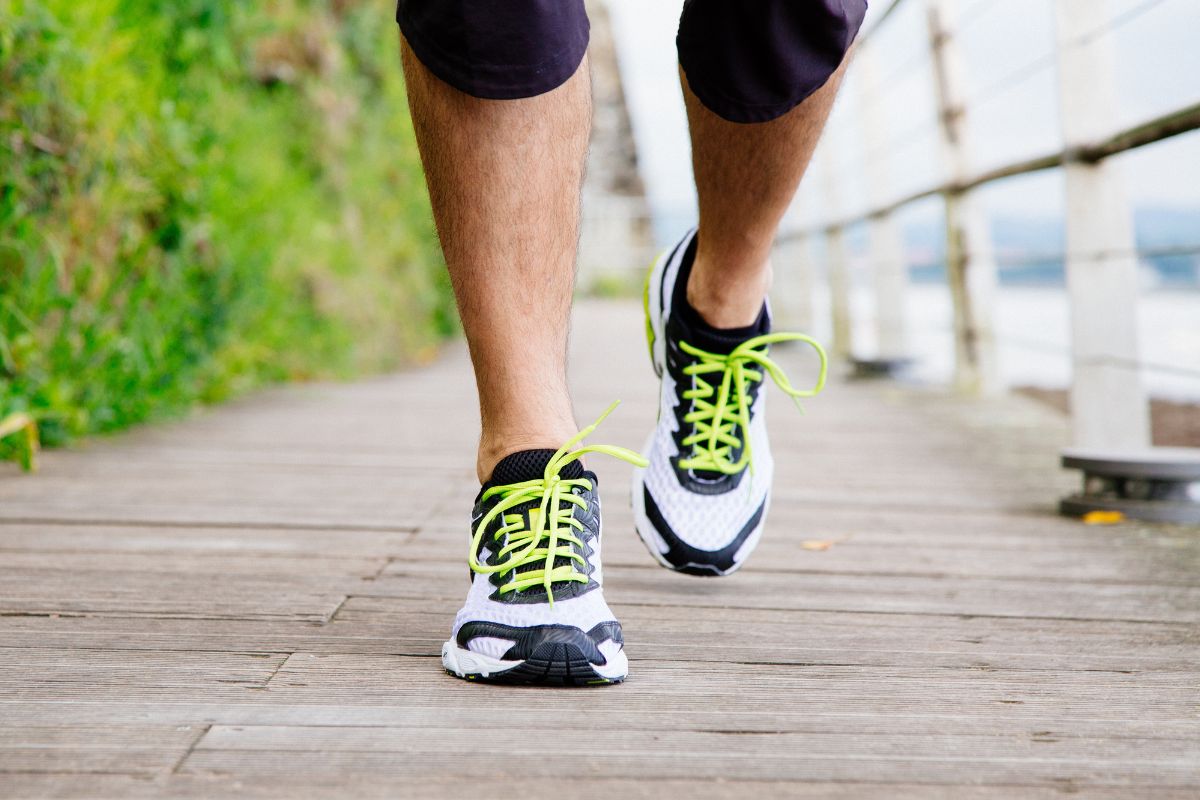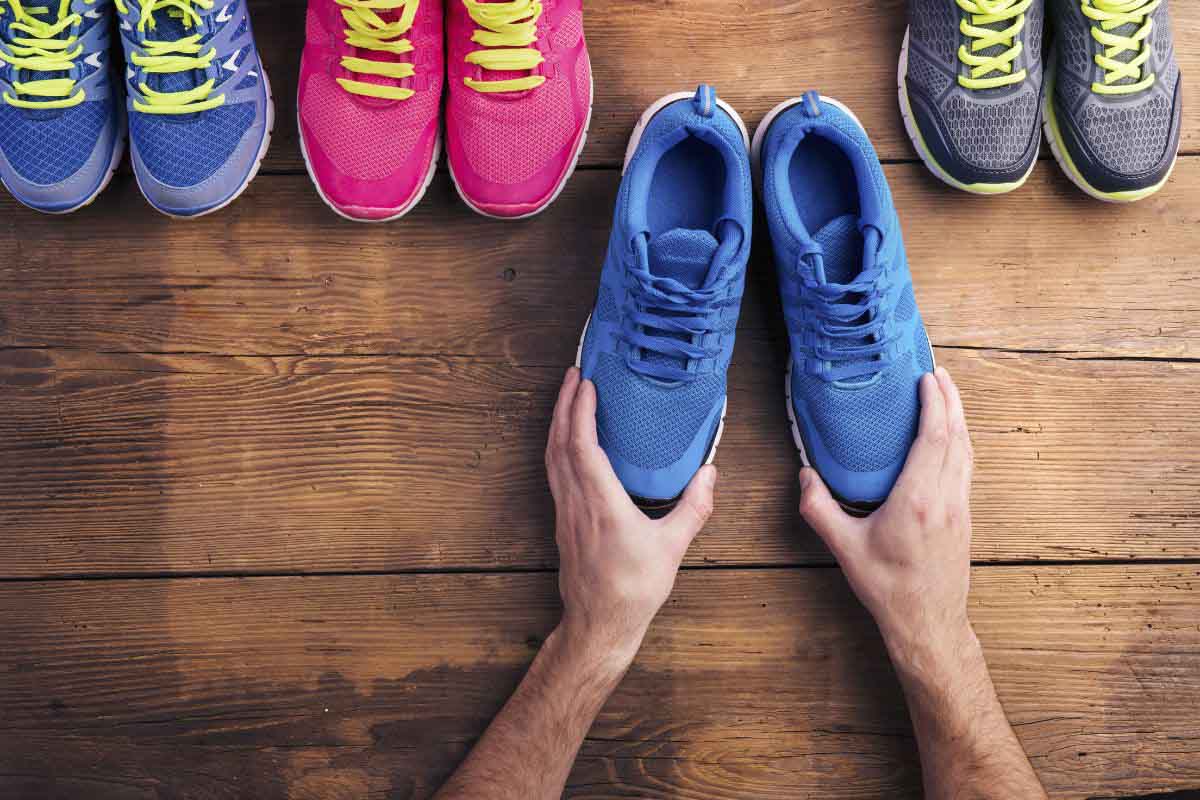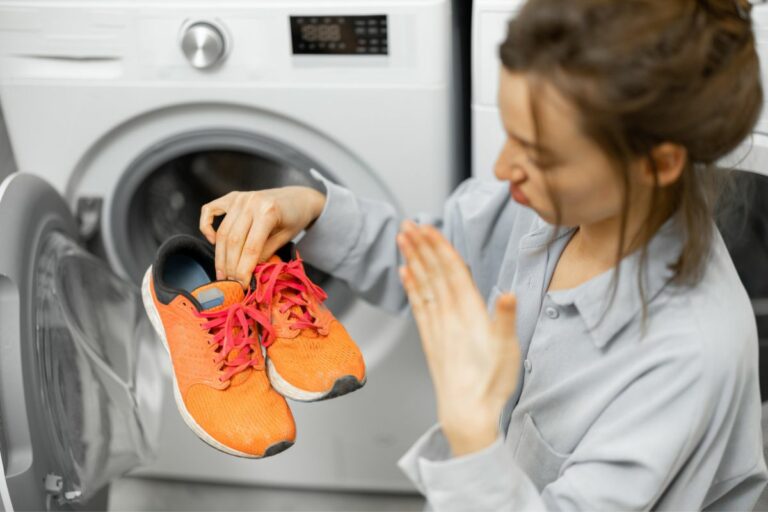Neutral VS Stability Running Shoes: How To Know What Shoe You Need?

Do you struggle when choosing running shoes? Are you wondering what the difference is between neutral and stability running shoes? And why should you care?
To help you understand, we’ve written this guide to explain the differences between stability running shoes and neutral ones.
- Neutral running shoes are designed for runners with a neutral or correct running pattern
- They have even cushioning throughout the midsole and minimal added stability on the upper.
- They are the best starting point for most runners as they allow the foot to move and flex naturally.
- Stability running shoes are for people who overpronate and need extra corrective support.
- They have added support in the midsole and on the sides of the upper
- they usually have stiffer or more supportive foam under the medial arch
However, even if you know what they are, what is the difference between them?
Neutral vs. Stability – What’s The Difference?
The difference between neutral and stable running shoes lies in their construction.
Stability shoes have more supportive features than neutral shoes. These features can reduce how much your foot pronates and help align your feet when it hits the ground.
Neutral shoes do not offer stabilizing features. They are designed for people who run in the technically correct way. When running with a neutral shoe, your foot can flex without constraint.
What Is Pronation? How Does It Affect Shoe Choice?
In some way, every runner pronates. But excessive pronation can lead to a foot injury, such as a runner’s knee.
The type of shoe you buy will depend on how your foot pronates.
Pronation is how your foot rolls inward when it hits the ground.
When your foot hits the ground, it will often roll inward to absorb shock. If your foot rolls inward too much, you might get injured. Over half of experienced runners can get hurt this way.
Everyone pronates differently, and how your foot handles the impact depends on each person.
Let’s take a look at different shoe types.
Neutral Running Shoes

The best starting point for most runners is to wear neutral shoes that allow the foot to move and flex naturally.
They are designed for runners who don’t pronate too much. They offer some level of support, but not that much as stability shoes.
By wearing neutral shoes, you’ll find they reduce your rotation speed but won’t reduce greater degrees of pronation.
Essentially, neutral shoes will cover a broad spectrum of running shoes.
While there are slight differences between stability and neutral running shoes, it depends on the type of runner that wears them.
Say, for example, that you have narrow feet. You may find these shoes less stable than if you wore a wider-fitting neutral shoe.
Examples of neutral running shoes:
Hoka Clifton is Hoka’s most popular model. It balances soft shock absorption, lightweight design, and style.

Brooks Glycerin is a famous road running shoe that offers neutral stability.

These shoes are the most popular shoes of their manufacturers. That’s why we wrote another whole article where we compare them head-to-head. To figure out which of these suits you, you can read our article about Brooks Glycerin vs. Hoka Clifton by clicking here.
Stability Running Shoes

Some runners need more support in their shoes than others. You have two options:
- Stability shoes or
- Neutral shoes with insoles that offer improved stability.
Stability shoes have extra features that help reduce how much your feet pronate. These shoes help to align your leg more than a neutral shoe would.
One of the easiest ways to stabilize your feet is by having a shoe with denser foam on the medial side of the shoe.
The thicker foam allows additional support for your arches and stops your feet from rolling inward.
When looking at stability shoes, you’ll find that the position and shape of the denser foam vary. All brands use different shapes and sizes of foam to cater to movements in a runner’s legs and feet.
So long as you stop your feet rolling further inward, you can reduce the rotation of the rest of your leg.
Examples of stability running shoes:
No products found. is a light stability shoe for everyday runs.
No products found.Brooks Glycerin GTS is a more supportive version of the Glycerin shoe.

Shoe Inserts
Many runners use inserts in their shoes. It is cheaper to buy inserts for your present neutral running shoes than to buy new stability shoes. And if you have feet problems, like plantar fasciitis, it is easy to test different inserts. Insert typically last even longer than the shoes themselves.
Superfeet shoe insoles help to stabilize and reduce stress on feet.

How To Choose Your Perfect Shoe

The type of running shoes you have will depend on your gait.
However, to help you understand, we’ve also delved into more detail on the three different pronation types.
1. Supinator
The supinator variety is when the outer side of your heel hits the ground at an angle.
Usually, you’ll find there’s slight pronation involved, so there’s a more considerable amount of shock through your lower leg.
If you’re a supinator, you’ll likely have a high arch. You put more pressure on your smaller toes on your outer foot when you push off.
You’re probably more susceptible to shin splints, straining your ankle, or getting plantar fasciitis.
2. Neutral
Neutral types will find that when their foot lands, it does so on the outside of their heel.
Your foot then rolls inward to absorb the shock and support your body weight.
You’ll find that you’re much better at evenly distributing your weight from the front of your foot when you push off too.
In terms of your arch, you may have a standard size.
The excellent news about neutral pronation is that you’re not as likely to get injured due to effectively absorbing the shock.
However, that doesn’t mean that you’re immune to getting hurt.
3. Overpronators
Overpronators are those who most likely have flat feet or low arches. When your foot lands, it does so on the outside of your heel.
Then, when it rolls inward, it does so excessively. By overpronating, you end up transferring your body weight to the inner edge of your foot instead of the ball of your foot.
When you’re pushing off, you do so on your big toe and second toe. So, you’re more likely to get shin splints, plantar fasciitis, heel spurs, and bunions.
As you can see above, you’ll find that everyone has a different way of running.
Many people can’t control this, as it depends on the shape of their feet. You must choose your shoes based on how comfortable you find them.
That’s why you should always try on your shoes before you buy them. What someone else classifies as a great shoe may be uncomfortable to you.
Even depending on your arch, it doesn’t mean that this determines the type of shoe you mean.
It gives you more insight into the kind of support you may need.
How Do You Know Which Running Shoe You Need?
So how do you know if the new insole is enough? And how can you find the proper stability shoe?
To find the best shoe for you, you need to analyze your gait and see how you run.
The best way is to visit a local specialty running shoe store with an expert outfitter. They might have foot scanning or pressure mapping technology that gathers information about your feet. Or they have you run on a treadmill to analyze your foot strike with a slow-motion camera.
They measure your foot length, width, and arch height to determine the support you need. They might gauge your foot motion and stride to find the perfect shoes.
If you’re buying online or have no access to analysis, you can do a few things to decide the type of shoes.
Stability shoes are often needed if you have low arches.
1. The wet test: The wet feet test is a classic test you can do on your own. Step onto a paper with wet feet. What does the pattern look like? Is the entire sole of the foot in contact with the floor? If it is, you might have flat feet with low arches. You might get benefit from stability running shoes.
2. Look at the wear of old shoes: Look at the outsoles of your present running shoes. Where is the heaviest wear? Neutral runners typically have an even wearing. Over/underpronators typically have uneven wear on either side of the shoe.
Is a Cushioned Running Shoe the Same as Stability Shoe?
No. Shock absorption is the purpose of cushioned running shoes. Some runners benefit from the extra cushion (when we run, the impact to the ground can be up to three times our body weight).
Some brands, such as the Hoka, are known to have super-cushioned running shoes.
Runners with high arches sometimes prefer super-cushioned shoes. Stability shoes are often favored by runners with flat arches.
How Stability And Neutral Shoes Are Constructed?
Most running shoes have a soft lateral edge to slow your speed. Including these on the outer edges of your shoe can prevent your legs from rotating too far inwards.
The technical term for this part of the shoe is the crash pad.
You should always keep an eye on your crash pad after running at a distance, as your crash pad will break down over time.
When it comes to construction, both neutral and stability shoes work similarly.
Both slow you down, and they reduce the rotation of your joints as you pronate.
The Bottom Line
Hopefully, this guide has helped you to understand the differences between neutral and stability running shoes.
The type of shoe you choose depends on how you pronate, and both of these shoes can prevent you from getting significant injuries.
If you’re ever confused about the type of shoes you need to buy, then feel free to consult a specialist near you.
You can adjust the lacing of your running shoe to provide a snugger fit if they feel loose. Altering the lacing can also give you more breathing room when your running shoes feel too tight.






